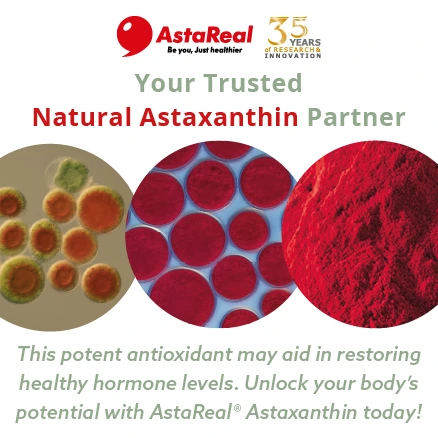Beauty injustice: Study finds toxic chemicals in cosmetics for Black and Latina women
A US study has revealed that formaldehyde and formaldehyde-releasing preservatives (FRPs), a group one carcinogen, are present in daily personal care products used by Black and Latina women. Hair and skin care products showed the highest amount of the toxins. The findings highlight a need for stricter regulations for consumer safety and raise awareness of racial inequality in the beauty industry.
The formaldehyde toxins were found in personal care products such as body lotion, soap, shampoo, conditioner, curl cream, hair oil, hair mousse, facial soap, facial cream, hair gel, eyelash glue, and eyeliner.
Personal Care Insights speaks with Robin Dodson, the study’s lead author, associate director of Research Operations, and research scientist at Silent Spring Institute in Massachusetts, US.
“Formaldehyde is a known International Agency for Research on Cancer group one carcinogen [confirmed carcinogenic to humans]. Even low levels of exposure are of concern for carcinogens. In the short term, exposure could lead to skin irritation or respiratory impacts, depending on the product type,” says Dodson.
“These chemicals are in products we use all the time, all over our bodies. Repeated exposures like these can add up and cause serious harm,” says Dodson. Other items on the group one carcinogen list are asbestos and smoking tobacco.
The study notes that several studies have confirmed formaldehyde’s highly toxic and carcinogenic properties. The ingredient is mainly used to extend shelf life and prevent microbial growth. Although it is banned in several countries and US states, American consumers may still be exposed to it.
 The authors argue that the new study is the first to demonstrate FRP’s presence in products for daily use.Daily formaldehyde use
The authors argue that the new study is the first to demonstrate FRP’s presence in products for daily use.Daily formaldehyde use
The Silent Spring Institute study examined products routinely used by 70 Latina and Black women in Los Angeles, US.
The authors argue that while FRPs were previously known to be present in hair straightening products, the new study is the first to demonstrate their presence in products for daily use.
The participants logged what products they used through an app developed for the study, documenting them through photos.
The results were contextualized using data from the Environmental Protection Agency’s public Chemical and Products Database. They showed that 53% of the participants used at least one daily product with formaldehyde or FRPs, although only 4% of the personal care products and 8% of the database listed them as ingredients.
“Formaldehyde has been a long-standing focus of beauty justice,” notes the study.
It stresses: “It is both an emerging area of research that recognizes racial and ethnic inequalities in exposure to potentially toxic chemicals in personal care products as an environmental justice concern and an area of advocacy focused on equitable access to safer products to address exposure and health inequities.”
The study, published in the Journal of Environmental Science & Technology Letters, found that 47% of the skin care and 58% of hair care products listed with FRPs contained DMDM hydantoin (1,3-Dimethylol-5,5-dimethylhydantoin). The second most common FRP was diazolidinyl urea, present in 17 products, all but three of which were skin care products. A body lotion and a shampoo also listed several FRPs as ingredients.
“Despite these chemicals being listed in only about 4% of the products used by study participants, over half of the study participants use products with these chemicals. These chemicals are being used in popular products,” says Dodson.
 The EU banned 1,700 substances in cosmetics, while the US FDA only banned 11.Regulatory differences
The EU banned 1,700 substances in cosmetics, while the US FDA only banned 11.Regulatory differences
Regulations for personal care products vary significantly across global regions. A spokesperson from Roquette Beauty recently told us that the EU banned 1,700 substances in cosmetics, while the US Food and Drug Administration (FDA) banned only 11.
The Silent Spring Institute has released guidelines for US consumers on how to spot potential formaldehyde-releasing preservatives. Those include DMDM hydantoin, diazolidinyl urea, imidazolidinyl urea, quaternium-15, and sodium hydroxymethylglycinate.
“Unfortunately, formaldehyde-releasing preservatives have these long, complicated names, and it may not be evident to the consumer that they are formaldehyde releasers,” says Dodson.
She adds: “Good news for those in the EU — formaldehyde has been banned in cosmetics since 2009. There are new labeling requirements for indicating when a formaldehyde releaser in the product is expected to release formaldehyde.”
Washington state’s Department of Ecology recently released a draft regulation banning 28 FRPs, which will become effective in 2027.
 Nail products are more often used by Black and Latina women, compared to white women. Racial inequality in beauty
Nail products are more often used by Black and Latina women, compared to white women. Racial inequality in beauty
The Environmental Working Group (EWG) recently condemned the US FDA for continuing to delay banning formaldehyde in hair-straightening products, which puts consumers and salon workers at risk.
The study also stresses that prior studies have demonstrated that hair strengthening products are mainly used by Black women, and nail products are used more by Black and Latina women compared to white women. Raising the issue of racial beauty standards, the authors argue that formaldehyde exposure from cosmetics has not been well characterized in a beauty justice context.
EWG recently reported that Black women face a disproportionate health risk from toxicity in personal care products, facing pressure to conform to societal norms such as skin lightening or hair relaxers. The report found that 80% of beauty products marketed for Black women were moderate to highly hazardous.
Personal Care Insights recently reported that mercury is a common and “appealing” ingredient for manufacturers to add to skin bleaching products, as it makes the skin appear lighter within a few days, and limits melanin production. However, it is also classified as one of the top 10 most dangerous chemicals to public health according to the WHO as a neurotoxin causing kidney damage, nervous system disorders, psychosis, neurological damage, and severe skin reactions.














